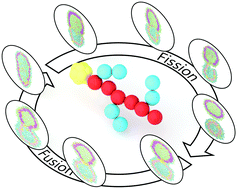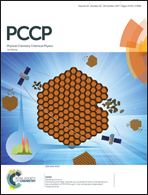Dynamic evolution of a vesicle formed by comb-like block copolymer-tethered nanoparticles: a dissipative particle dynamics simulation study†
Abstract
Vesicles are well-sealed capsules that can store or transport substances. Their dynamic evolution mechanisms are important to fulfill specific functions. In the present study, dissipative particle dynamics (DPD) simulation was employed to study the formation, fusion, and fission pathways of vesicles. Our results show that comb-like block copolymer-tethered nanoparticles can self-assemble into stable vesicles, which may be a good candidate for drug entrapment and controlled release of drug. The spontaneous fusion of this type of vesicles has been studied, whose mechanism is different from that of the vesicles formed from comb-like block copolymers. However, the fission mechanisms of the two types of vesicles are similar. To summarize, the introduction of nanoparticles alters the fusion mechanism, but causes no difference in the fission pathway of vesicles. The reason may be attributed to the nature of nanoparticles. The fusion and fission processes always experience the congregation of nanoparticles. The large and rigid nanoparticles inevitably result in changes of surface tension of the vesicle that is a key factor influencing the membrane dynamics.



 Please wait while we load your content...
Please wait while we load your content...